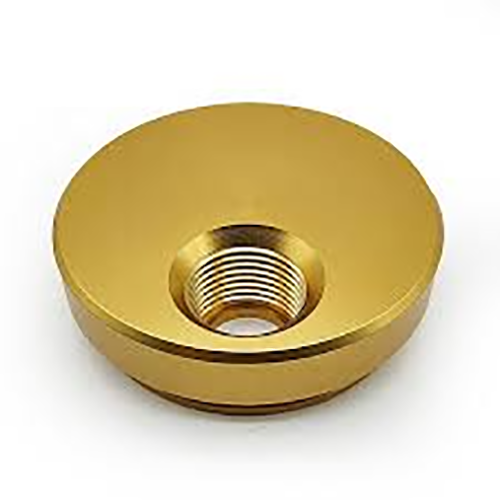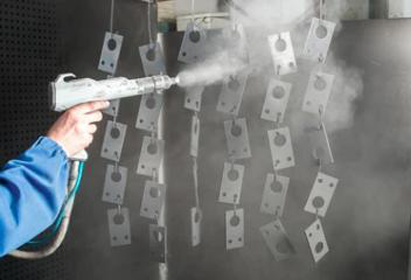
Delivering appointed top-layer smoothness for a manufactured item is critical.
- Technical drawings lay out precise surface criteria for components
- Many specifications reference Ra, an average roughness metric, for surface measurement
- Familiarity with surface callouts is vital for achieving performance targets
- Specified roughness affects lubricant distribution, frictional performance, and durability
- Accurate interpretation of callouts is required to realize the targeted surface
CNC Machining: Precision Engineering Defined

CNC machining represents a game-changing method in production via numerical control software the system carves sophisticated geometries with precision.
- The technology facilitates production of complex parts across many materials
- CNC’s flexible capabilities match requirements of aerospace and automotive fields
- Machine-controlled machining secures stable repeatability for production lots
From prototyping to mass production CNC machining plays a pivotal role in shaping modern manufacturing
Comprehending CNC Machine Specifications
Understanding equipment specifications can look intimidating initially
Yet armed with basic knowledge and methodical steps you can manage technical specifications
Commence with recognizing main metrics: spindle rpm, feed, precision, work volume, control system
Every spec plays a role in determining machine performance.
Illustratively, greater spindle rpm aligns with softer workpieces; increased feed raises manufacturing pace.
Knowing these correlations permits matching machine capabilities to your specs
Always examine producer technical literature in detail.
Supplier manuals often give critical context and define technical language
What is a CNC Machine? A Comprehensive Guide
CNC machines are specialized computer-controlled systems used in manufacturing for precise and automated fabrication of various materials They accept digital G-code to steer tools and control machining actions.
- Frequent CNC varieties include mills, lathes, routers, plasma cutting machines
- Machining operations fit metal, plastic, wood, and composite workpieces
- Also CNC equipment offers quick turn prototyping and low-volume runs for innovators and labs
Overview of CNC Machine Fundamentals
They exemplify the union of precise mechanics and modern control software Flexible equipment harnesses software instructions to automatically fabricate basic components and intricate assemblies The fundamental principle behind CNC machines is the translation of digital designs into physical forms.
- Numerical control manufacturing
- Code-driven production workflow
This process involves a series of precise movements guided by the computer program Shop technicians tune machining parameters, supervise production, and certify product accuracy.
Surface Finish's Importance in CNC Machining
Delivering planned surface condition during machining is necessary It greatly affects the final product's performance as well as its aesthetics Substrate properties, machining variables, and post-process methods shape surface outcome.
Superior polishing extends service life; rougher finishes may limit capability Numerical control machining supplies multiple methods and cutters to obtain target textures.
- By using distinct cutter geometries |diamond tooling|RPM and feed adjustments to craft finish
- Secondary operations like sanding, grinding, or polishing boost finish
Knowing parameter-to-finish links is vital to secure the best results.
CNC Overview: From Use to Application
Programmed machining provides accurate part shaping across multiple material types They apply digital directives to fabricate detailed geometries consistently A fundamental understanding of CNC machine operation including the role of G-code programming and tool selection is essential for successful machining processes
Use cases cover aerospace, automotive, medical, electronics, and more sectors From fine aerospace pieces to intricate mold geometries, CNC underpins complex manufacturing
Surface Finish Standards for CNC Machining
Proper specification of surface finish is crucial when machining parts on a CNC machine It assures alignment with required performance and visual expectations Engineers generally specify surface quality using the Ra roughness notation Shown in micrometers or inches, the measurement denotes typical roughness magnitude.
Account for desired texture and the component’s purpose when selecting finish

Example: polished finishes often suit parts needing close tolerances and exact mating
Coarse finishes can benefit components where traction or friction are functional
Leverage precise callout notation within drawings to indicate required finish Provide the roughness average and detail supplemental processes or treatments needed.
Recall that well-defined roughness notes help ensure production success
Kinds of CNC Machines and Their Strengths
CNC manufacturing hosts an extensive set of machines for assorted machining tasks They adopt CAD-to-CAM pipelines to steer cutting tools for precise part manufacture.
- Drilling units excel at producing holes and axial features in parts
- Lathes excel at producing round parts such as shafts rods and bushings
- Beam and jet cutting methods enable accurate slicing with differing thermal impacts
Choosing the right CNC depends on production goals material type and required accuracy Different CNC platforms supply distinct functionality valuable across industries including automotive and aviation.
Achieving Premium Surface Results in CNC Processes
Delivering optimal surface quality is necessary and CNC processes are well-suited to achieve it With exact feed control spindle tuning and proper tool shapes machinists influence finish quality and minimize defects Also advanced insert materials and suitable coolant practices support improved finishes Strategic toolpath planning and precise machine adjustments result in superior finish quality.
Programming Strategies for Surface Finish
Controlling finish within programming is key to obtaining target surface results Parametric choices for feed, speed, and tool shape govern surface smoothness and defects Careful selection of these parameters in conjunction with proper lubrication and coolant management can yield a smooth and flawless surface finish.
- Continuous tool maintenance and oversight preserve high finish consistency machine finishing symbols Plus regular inspection and maintenance of tools copyright finishing standards Moreover scheduled tool maintenance and inspection preserve surface performance
- To perfect surface results factor in material, roughness, and intended application
- Simulation aids in adjusting parameters virtually to prevent surface problems
- Besides that systematic tool upkeep and monitoring ensure sustained surface quality
